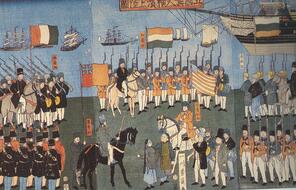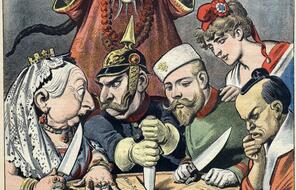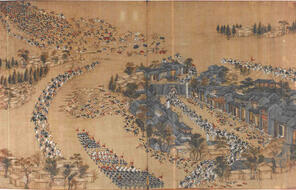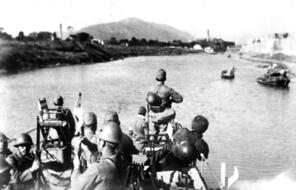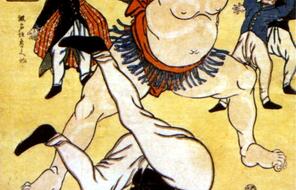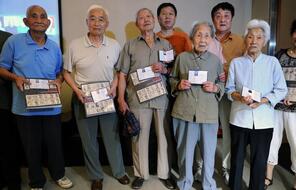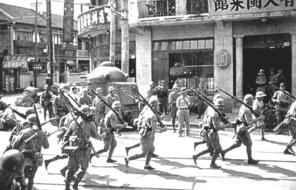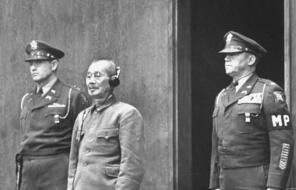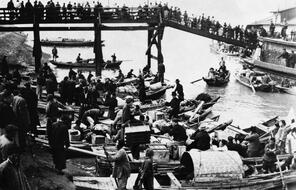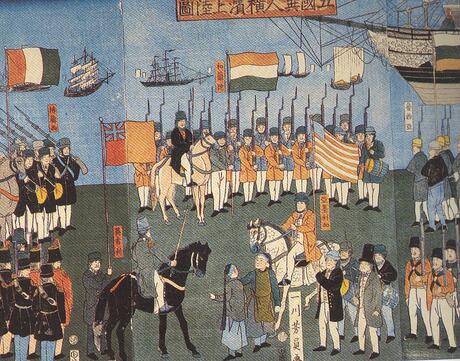
Western Imperialism and Nation Building in Japan and China
At a Glance
Language
English — USSubject
- History
Grade
9–12Duration
One 50-min class period- Genocide
Overview
About This Lesson
In the opening lesson of this unit, students will begin to explore the factors that contributed to Japan’s invasion of China during World War II and the occupation of Nanjing. Through an exploration of primary sources, including a Japanese woodblock print and a political cartoon, they will be introduced to the history of Western imperialism in East Asia and how it influenced both the identities and ambitions of Japan and China. Students will also conduct a comparative analysis of timelines depicting major events in China and Japan during the nineteenth century, beginning to explore the two countries’ divergent responses to Western imperialism and how these developments affected the complexity of nation-building efforts in China and Japan. This lesson and the following one, on the rise of nationalism and militarism in Japan, are both critical for understanding the complex factors that led to the Japanese war crimes known today as the Nanjing atrocities.
Preparing to Teach
A Note to Teachers
Before you teach this lesson, please review the following guidance to tailor this lesson to your students’ contexts and needs.
Lesson Plans
Activities
Assessment
Materials and Downloads
Quick Downloads
Download the Files
Western Imperialism and Nation Building in Japan and China
Unlimited Access to Learning. More Added Every Month.
Facing History & Ourselves is designed for educators who want to help students explore identity, think critically, grow emotionally, act ethically, and participate in civic life. It’s hard work, so we’ve developed some go-to professional learning opportunities to help you along the way.
Exploring ELA Text Selection with Julia Torres
On-Demand

Working for Justice, Equity and Civic Agency in Our Schools: A Conversation with Clint Smith
On-Demand

Centering Student Voices to Build Community and Agency
On-Demand


